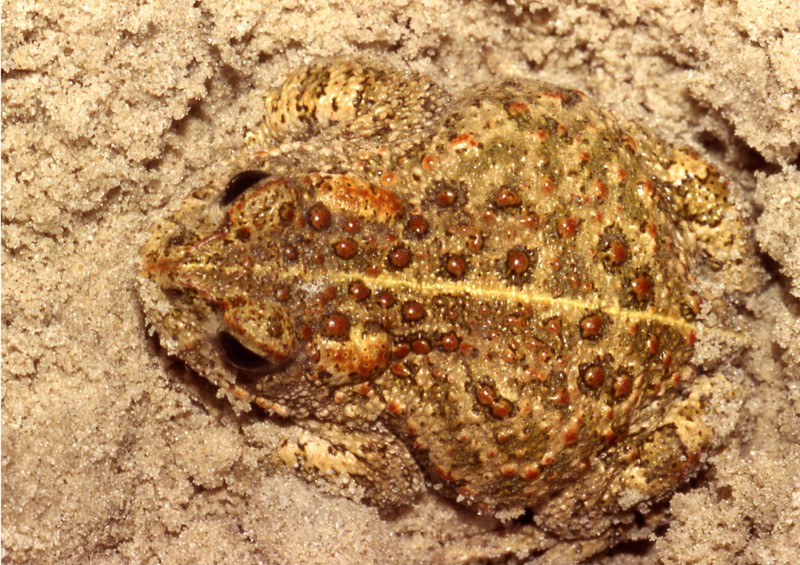|
| 질의: epidalea calamita | 결과: 1번째/1 | |
Natterjack Toad (Epidalea calamita) - Wiki
| 제목: | Natterjack Toad (Epidalea calamita) - Wiki
| |

| 해상도: 1899x1341
파일크기: 706633 Bytes
등록시간: 2007:11:01 11:28:01
|
Natterjack Toad
From Wikipedia, the free encyclopedia
[Photo] Natterjack Toad (Bufo calamita, currently Epidalea calamita). Source: Own picture, made in NW Germany in April 1983. Author: Christian Fischer (http://commons.wikimedia.org/wiki/User:Fice). Copyright (C) 1983 Christian Fischer
Permission is granted to copy, distribute and/or modify this document under the terms of the GNU Free Documentation License, Version 1.2 or any later version published by the Free Software Foundation; with no Invariant Sections, no Front-Cover Texts, and no Back-Cover Texts. A copy of the license is included in the section entitled "GNU Free Documentation License". |
The Natterjack Toad (Epidalea calamita, formerly Bufo calamita) is a toad native to sandy and heathland areas of Northern Europe. Adults are 60 - 70 mm in length and are distinquished from the common toad by a yellow line down the middle of the back. They have relatively long legs, and this gives them a distinctive gait, contrasting with the hopping movement of many other toad species.
Natterjacks have a very loud and distinctive mating call, amplified by the single vocal sack found under the chin of the male animal.
Life history
This toad lives for up to 12 years and feeds on insects, weevils and other small animals. At night it moves along open terrains with very sparse vegetation and in loose sand the tracks can often be seen. They move along considerable distances each night, which enables the species to colonize new habitats very quickly.
Reproduction
The Natterjack Toad spawns between the end of April and July, laying 'strings' of eggs in shallow pools. The loud mating calls are important because the Natterjack Toad is often present in low numbers so it is important that the sexes can find each other.
The pools need to have a very slight slope with a sparse vegetation on the banks and in the water. These are very often temporary pools and sometimes the larvae die when the pools dry out. The Natterjack however compensates for that risk by mating a few times each summer and the age of the juveniles can vary from a month to 3 months in september. It appears that the early breeders are not the same individuals as the toads that reproduce later in the season.
Conservation
In the UK this species is one of only three amphibians protected under the national Biodiversity Action Plan. The reason for the threatened status of this organism is: (a) loss of habitat from human overpopulation, (b) reduction in habitable coast from construction of dykes and seawalls, and (c) acidification of aquatic habitat from acid rain and other pollution factors.
http://en.wikipedia.org/wiki/Natterjack_Toad
| The text in this page is based on the copyrighted Wikipedia article shown in above URL. It is used under the GNU Free Documentation License. You may redistribute it, verbatim or modified, providing that you comply with the terms of the GFDL. |
|
^o^
동물그림창고 똑똑전화 누리집
^o^
|
|